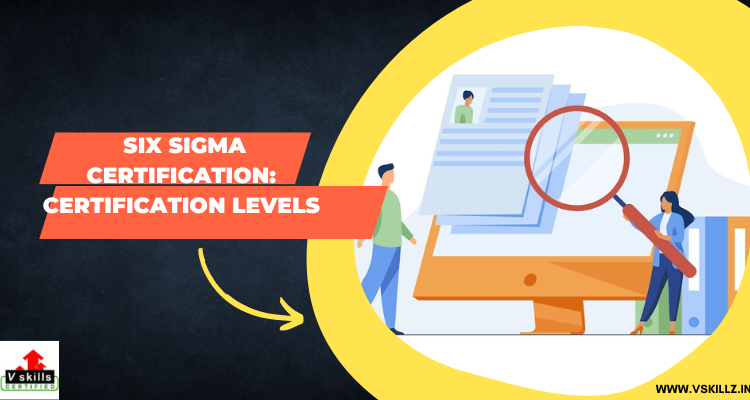Introduction
Learning and mastering six sigma certifications can prove to be a game changer in your career path. Six sigma certifications on your resume reflects your ability and commitments to improve business acumen and analytical skills and improving the quality operations of the organization you are currently working in. You must be wondering what is the significance of six sigma certification, to elaborate on that it shows that you as an individual is qualified to complete projects and can promote best quality management practices. They enhance your process improvement and enhancing your credibility.
Various Sigma Certification Levels
Now that we are clear with the concept of six sigma certification, let us explore various types of sigma certification levels. There are various types of sigma certifications which are as follows:
- White Belt: It is the basic six sigma level certification which consists of only basic concepts. It comprises of individuals who have not undergone any certification training or extended program. It helps in engaging change management in an organization and and assists in problem solving teams of the project. With the basic grounding individuals can participate in the problem solving tasks related to quality management and waste reduction.
- Yellow Belt: It is an upgradation of white belt. At this stage you tend to know specifies of six sigma, how and where to apply it. At this stage you can support project teams on problem solving tasks and assist managers at high levels. Along with that develop knowledge needed to be assigned as a contributing member.
- Green Belt: At this level you get the ability to understand advance analysis and resolve quality related problems as well. They learn to apply problem solving framework such as DMCAI: Define, Measure, Analyze, Improvement and Control. It helps in gaining experience in domain like project management, heath care, administrator or financial management. After getting this certification, leaders are ready to overtake the projects and make relation between LSS concepts and goals of their organization.
- Green belt leaders lead projects and assist black belt leaders with data collection and analysis. They can put knowledge gained into actions, eliminate wasteful activities and obtain useful insight from data.
- Black Belt: For upskilling your skillset to next level after green belt, leaders may take up six sigma black belt certification. They are considered the experts and agents of change who provide training to leading projects. It requires comprehensive knowledge of LSS strategies coupled with mastering the skill as professionals they need for planning, strategizing, and leading complex projects in organization.
- During a black belt level course, students apply the knowledge gained so far by conducting the project either on the employees or on not for profit organization. By collecting and employing in real world, the six sigma tools help the students develop the abilities they need to make business work more productive and customer satisfactory.
Master Black Belt
This is highest level of six sigma certification level one could acquire. It is characterized as a seasonal belt with leadership qualities and problem solving skills to master belt in LSS. The position reflects that the individual has a broad view of strategy throughout a business and can lead across various teams. Lastly, at this level you will shape strategy, would develop key metrics, act as a consultant and coach black and green belts.
Champion
A champion comprises upper level managers and who leads LSS strategy and deployment. Champions ensure that initiatives to lower waste and defects removal come together in alignment with the company’s growth needs. The champion mentor the leaders involved in LSS implementation and track their progress aided by master black belts.
 Stay Ahead with the Power of Upskilling - Invest in Yourself!
Stay Ahead with the Power of Upskilling - Invest in Yourself! 



